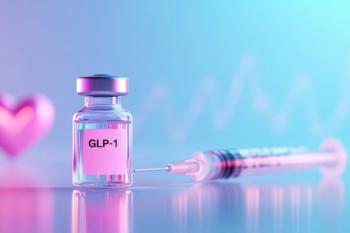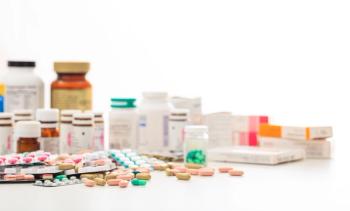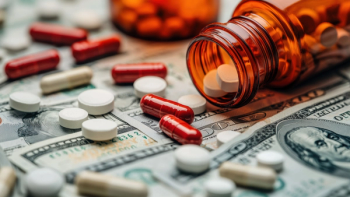
- Pharmaceutical Commerce - October 2023
- Volume 18
- Issue 5
Return of Cash Pay for Drugs
The trend is continuing for brands and even for some specialty products.
Thanks to the reemergence of cash pharmacy, the two primary funding sources for medications in the US—patients and plan sponsors—now have more visibility than ever to what is driving their out-of-pocket expense for therapies. This trend will continue to challenge our industry to innovate the models that have worked over the last three decades.
Let’s start with the history. Before there were pharmacy benefit managers (PBMs), consumers took their prescription to their corner drug store and paid cash. It wasn’t until the 1980s that the first PBM to negotiate discounts for plan sponsors, Express Scripts, entered the picture. With the arrival of PBMs negotiating for pharmacy benefit products, the average cost of pharmaceuticals grew from approximately 1% of the US wage income to more than 5% by the end of the 2010s. Yet it isn’t fair to simply state that PBMs had the only hand in this: the 1990s ushered in the arrival of specialty products for oncology, immunology, and neurology, and the 2000s and 2010s brought products for orphan and rare disease and cell and gene therapy, with more innovation on the way.
By the 1990s, PBMs were fully responsible for negotiating and paying for pharma products on behalf of their plan sponsors. Medicare, as an example, didn’t have a pharmacy benefit until the Medicare Modernization Act was implemented in 2006.
The rise of the PBM was complemented by the rise of generics, which grew 19% of prescriptions in 1984, according to IQVIA (IMS Health), to now a staggering 92% of all prescriptions dispensed from a retail pharmacy in 2023.1
In my early career, I managed one of the largest generic buying portfolios, offering a great view into the economics associated with both brands and generics. When coming to market, a generic would price at 90% to 50% of the innovator price. Wholesalers and retailers went from making 3% to 5% on the brand to 20%+ on the generic. Back then, a generic would capture ~30% of the market in the first few months. By the end of the 1990s, a generic would capture 90% of a brand’s market share in the first month, benefiting PBMs, retailers, and wholesalers. This also benefited patients and plan sponsors, as patients would transition from paying $25 or $50 for the brand to $5 to $15 for the generic, and plan sponsors typically paid roughly 35% less for the generic than the brand. Everyone won, except for the brand manufacturer.
Enter the original shift back to cash pay in 2006: Walmart announced its $4 (30-day supply) and $9 (90-day supply) generics programs, stunning the industry. This was made possible by a plunging net cost of the product roughly 18 months after the initial generic launched. Typically, the net price of the generic sunk as low as 5% of the innovator depending on drug class, competition, and payer pressure, with a bottle of a 100-count pricing out as low as $1 to $2 per bottle. Walmart’s list of generics grew over time, and many pharmacies followed suit.
As it turned out, cash pay wasn’t ready for prime time yet; it had its fair share of headwinds. In most situations, the cash payment amount didn’t apply to a deductible, and consumers weren’t savvy about what copay is and what cash is. Pharmacies had gag-orders by PBMs not to discuss financial options with the consumers. Even today, it can be opaque for the typical consumer.
The next big evolution came in 2011 with GoodRx. Seeing both the insurance price and cash pricing allowed consumers to price shop. But this new movement to cash pay is not a positive trend for PBMs, retailers, and wholesalers that benefit from an inflated “covered” price. Personally, a medication I take has a $393 copay for the brand, $207 copay using insurance for the generic, or $18 cash price for the exact same product and manufacturer. Reports like this are ubiquitous on the internet.
In response, some retailers are running at the opportunity and others are trying to slow the trend. For retailers that rely on large PBM and insurance plans, the movement to cash is a significant threat to their business. For nearly all retail pharmacies, brands are now loss leaders and generics are the only products on which pharmacy makes money. Recent reporting shows some retail chains have abandoned programs like GoodRx, but this will not stop the trajectory. Cash pay pharmacies are growing as well as discount programs, such as Blink Health, Pharmacy Checker, Optum Perks,SingleCare, RxSaver, WellRx, America’s Pharmacy, Costco MPP, SaveonMeds, RxSavings Plan, FamilyWize, ValpakRx, Choice Drug Card, InsideRx, AARP Prescription Discount, and others.
From a financial and logistics perspective, the movement for generics to cash is the most simple and straightforward view of discounting. The dollar flow is very easy to follow because the pharmacy typically buys it at low net cost, marks it up, and sells it. Even when insurance is applied, there are no rebates to PBMs, little to no price increases after 2017, and the entire market runs on arbitrage by what the PBM charges the plan sponsor, what the retailer charges the PBM or government agency, and how the manufacturer prices to the pharmacy either directly or through a wholesaler. There is dramatically less complexity compared with brands and specialty products.
With 90%+ of prescription products being available generically and at consumable price points, whole new markets have opened for cash. Ecommerce/telehealth entities—Hims, Hers, Roman, and others—launched to focus on niche options for certain therapeutic regimens. In 2018, Amazon bought Pillpak. While seeming benign and just another expansion, this move clearly incorporated the concept like a GoodRx but embedded within the concept of a classic retail pharmacy.
Much of the value of cash pharmacies depends upon the knowledge of the consumer, which is gaining speed. According to a 2022 Avalere Consulting study, cash was approximately 5% of the market in 2019; by 2022, it had shot up to 9%. In a 2022 article,2 the Advisory Board Company, now a business unit of Optum, called the growth of the cash pharmacy wave behind them. But then in 2022, a Prescryptive Health report3 indicated that 61% of consumers surveyed had paid cash prices for prescriptions even though the drugs were covered by their health insurance, and 50% living in urban markets said it’s less expensive to pay out of pocket than to use insurance. Clicking into this report demonstrates that consumers know they don’t count toward the deductible or minimum out-of-pocket caps. In addition, 22% of the consumers polled paid cash because the drug wasn’t covered on their PBM formulary, and 29% used cash pay because their preferred pharmacy was not in-network.
The trendlines are clear: fueling this new wave are higher list prices, cost-shifting and sharing, high-deductible plans, and the growing number of formulary restrictions; according to IQVIA, NDC blocks have grown to over 450 by 2021.4 This has grown to such a fever-pitch that in January 2022, Mark Cuban jumped into the game with Cost Plus Pharmacy, epitomizing the business model of buying generic product at wholesale prices and charging a rough 15% markup, $3 dispensing fee, and a $5 shipping fee. In early 2023, Amazon Pharmacy announced RxPass for Amazon Prime members, which applies a $5/month charge and an unlimited amount of prescriptions.
Brands and specialty pharmaceuticals have entered the fray. Building on the back of the PBM employer cards that have been used for many years, consumers can tag onto a PBM net contract with discount cards that results in paying the same cash price as a pass-through plan sponsor. Many Wall Street analysts now use the discount card vendors to assess an estimated rebate from the manufacturer to the PBM. As of the publishing of this article, Mark Cuban’s Cost Plus pharmacy had generic Gleevec for $13.40/month compared with the list brand price of $10,996/month, according to an ASCO publication in February 2023.5 Even two of the recently launch biosimilars for Humira report cash pay prices that would have an annual course of therapy less expensive than the cost of some average deductibles.
What has been especially astounding is retail pharmacy’s view of branded pharmaceuticals. A group of us at Blue Fin Group were told in a recent interview with a prominent leader in the industry: “Tell your manufacturer clients three things:
- Pharmacy is walking away from brands.
- Pharmacy is building cash pharmacies.
- If branded manufacturers think they have a problem now, wait until Jan. 1, 2024, when the direct and indirect renumeration fees are shown to pharmacy on the front-side of a claim.”
A sizeable regional chain said, “Our pharmacy changes out roughly 90 of the 100 branded prescriptions we receive. We view ourselves as patient advocates, and the doctor doesn’t know the cost to the patient when the prescription is written. If a generic is available in the drug class, it is better for the patient and better for the pharmacy.”
There seems to be three distinct models across generics, brands, and specialty products, and it’s easy to get confused by the flow of the dollar being unique for each. This year, Caremark and GoodRx announced the Caremark Cost Saver, which suggests that cash pay will begin to apply to the deductible. And in August, Blue Shield of California appeared to break up the bundle when announcing its unique program with Mark Cuban’s Cost Plus and Amazon while still using CVS Health for specialty.
The pharma industry started as a cash business and at least for generics and some brands, it appears to be returning to that. The days PBMs telling plan sponsors not to pay attention to a single product but rather point to the discount off of average wholesale price (AWP) or comparing per member per month spending is in trouble. Consumers, pharmacies, and plan sponsors have caught on.
The ripple effects from a decline in generics as a percentage of total sales are likely to be exacerbated by the rise of the cash pharmacy, significantly impacting the entire industry given generics subsidize almost everything due to the nature of how business models bundle their pricing arrangements with one another. Specialty and brand pharmaceuticals might have to pick up the tab for this change, and it might play out poorly for many, as there likely won’t be time to properly think it all through. This will significantly impact PBMs, retailers, and wholesalers, and brings much complexity to our industry. Manufacturers must think about the implications to gross-to-net, government pricing and forward supply chains so that it all fits together.
This is what it looks like when you “put the genie back in the bottle.”
About the Author
Bill Roth is the SVP of IntegriChain’s consulting business, which includes Blue Fin Group, a strategic consulting company he started in 2001, and the existing IntegriChain operational consulting business.
References
1. Thayer, A.M. 30 Years of Generics. C&EN. 2014. 92 (39).
2. Why 'Cash' Pharmacies are Booming—and What it Means for Healthcare. Advisory Board. August 24, 2022.
3. Rewriting the Script: Independent Pharmacy Trends. Prescryptive. 2023.
4. Greenwalt, L. Payer Controls: Goodbye, Old Assumptions for Access and Uptake. IQVIA blog. September 28, 2021.
5. Kantarjian, H.; Welch, M.A. Influence of the ‘Mark Cuban Effect’ on Cancer Drug Prices in the United States: Focus on CML. The ASCO Post. February 10, 2023.
Articles in this issue
about 2 years ago
Pharmaceutical Commerce - October 2023 Issue (PDF)about 2 years ago
Taking Pharma's Temperatureabout 2 years ago
All About the Journeyabout 2 years ago
Drilling Down On Distributionabout 2 years ago
Affordability: Who's Responsible?about 2 years ago
Time to Ax Copay Accumulators?about 2 years ago
The State of the Pharma Cold Chainabout 2 years ago
Reshaped Priorities Pave Cold Chain Pathabout 2 years ago
Counterfeit Meds: Fighting the Forgersabout 2 years ago
Fortifying Vaccine Supply ChainsNewsletter
Stay ahead in the life sciences industry with Pharmaceutical Commerce, the latest news, trends, and strategies in drug distribution, commercialization, and market access.





